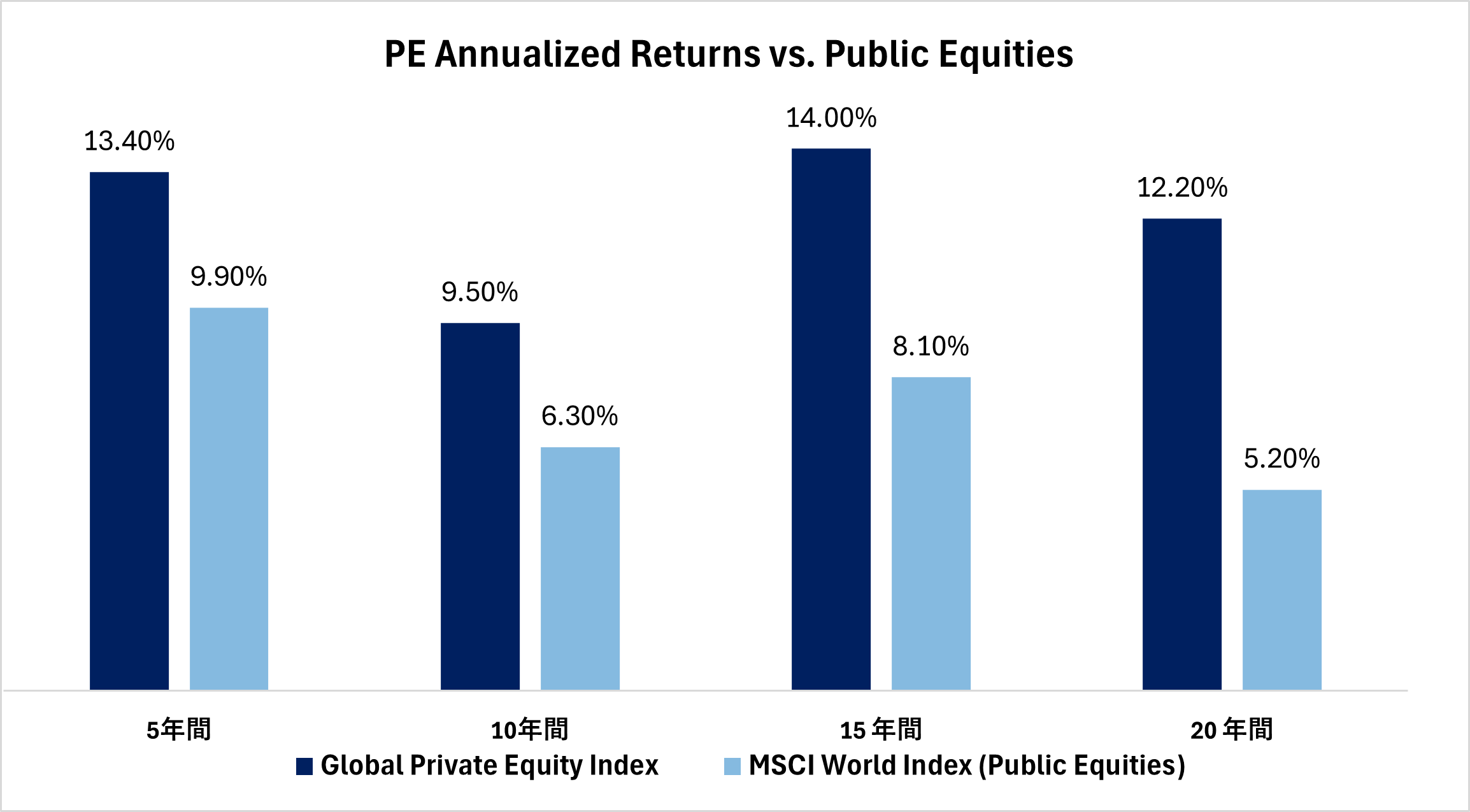Private Equity Part 2

What are the pros and cons of investing in PE?
Pros:
- Higher returns
- Private equity has historically outperformed public equity and other traditional asset classes and has an attractive risk-return profile for investors.
- Wide range of investment opportunities
- Private equity opens access to investment opportunities not available in public markets that often offer significantly higher upside potential.
- Diversification and risk mitigation
- Lower public market risk: Long-term value creation in private equity is created by the investment managers working directly with the company to make tangible improvements. On the other hand, public equity investments can be secondary transactions or passive investments that are more prone to economic or market fluctuations.
- Lower cyclical risk: Cyclical cycles in the economy often have a large impact on investment performance in the public market. As private equity provides a higher degree of control in the company itself, managers are better able to limit any downside risk during recessions or volatility.
Cons:
- High fees
- Investments into private equity funds often come with an annual fixed management fee along with a performance fee which is a percentage of the profits made on the investment.
- Lack of liquidity
- Unlike public markets, private equity investments have traditionally required long-term commitments (up to 10 years), preventing investors from selling or converting their investment to cash until the end of the investment period (although you can sell your investment on the secondary market if you are able to find a buyer).
- Higher risk
- The flip side to private equity’s higher returns is a risk that is said to be higher than that of public equity. This is due to factors such as portfolio companies being at early stages with immature organizational or financial structures, the high failure rate and unproven business models of startups, and the interest burden of debt in buyout investments.
The Life Cycle of a PE Fund:
- Fundraising:
PE funds raise capital from institutional investors including pension funds, sovereign wealth funds, endowment funds and other financial institutions.
- Investment Selection:
PE funds identify investment opportunities in private companies through analysis, utilizing their extensive networks and conducting due diligence.
- Investment:
The PE fund will negotiate the terms and prices of the deal with the target company or seller or shares. In some cases, the execution of the deal requires complex financial engineering.
- Value Creation:
Once acquired, the PE firm actively works with the company's management to improve operational efficiency, implement cost-cutting measures, expand into new markets, and pursue strategic acquisitions.
- Exit Strategy:
After a period of value creation, the PE fund sells its stake in the company through an IPO, a sale to another company, or a secondary market transaction, distributing the proceeds back to the fund’s investors (LPs).

